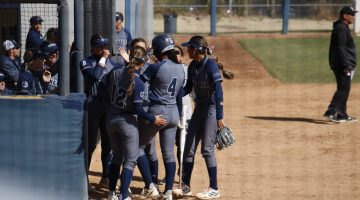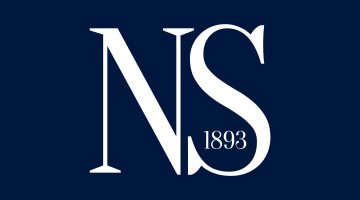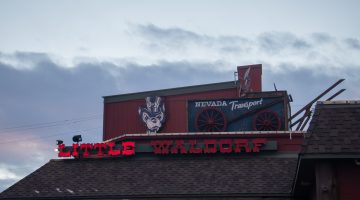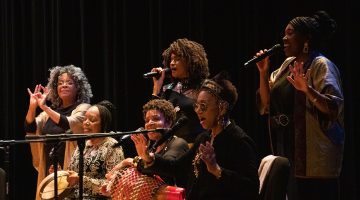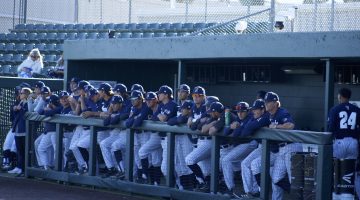
Students sit under a weeping crabapple tree in front of the Nazir Ansari Business Building on Monday, April 18. The University of Nevada, Reno, Arboretum Board is on a mission to educate passersby on the numerous species of flora on and around the campus.
Staff Report
The University of Nevada, Reno, is more than just a place to take tests and present research. It’s a growing, innovative sight for exploring and challenging the way individuals think, but it’s also something people might not realize right away — a living museum.
That’s what UNR Arboretum vice chair Kelly Norman calls it. The Arboretum board has multiple goals, including educating on the landscape and flora of the area, sustainability and environmental awareness, and works alongside the grounds crew to maintain the plants living here. John Claudius Loudon was a botanist during the 1800s and first coined the term “arboretum,” deeming it a place or garden where trees and other plants can be observed and studied for scientific purposes.
After being designated as an arboretum in 1985, the nature within and surrounding the university is developing along with the rest of UNR’s expanding campus. The trees on campus represent more than 60 genera and around 200 species.
This year also marks UNR’s second year as a Tree Campus USA University. The title is given by the Arbor Day Foundation, one of the nation’s largest nonprofit conservation and education organizations. It was founded in 1972, the centennial of the first Arbor Day, and has since grown to more than 1 million members.
That’s a special designation for the university and Reno, Nevada, which lies on the western edge of the Great Basin Desert. To be named a Tree Campus USA University, a campus has to satisfy five requirements, which include creating a campus tree advisory committee, a campus tree care plan, a program with dedicated annual expenditures and a service learning project that acts as an opportunity for students to get involved with tree-related projects.
Norman attributes the two-year dedication to changes in how the university cares for nature. She says that over the past few years, the university has been working to maintain the sustainability that helps plants grow here. Alternative ways to landscape, including those that avoid pesticides, are helping these areas thrive.
“With the Quad especially, we’ve worked over the past few years to renew the way we take care of it,” Norman said. “Having grass and places to sit and be outside and play is another part of the campus being inviting to everybody.”
Norman supports administrative and student efforts to keep the environment clean and ideal for growing plants, including newer policies like the campus’s attempts to ban smoking as well as the Associated Students of the University of Nevada’s initiatives to go green. She says this month can serve as a good way for everyone to get involved in keeping flourishing plant life on campus.
She discussed how during Arbor Day at the end of the month, the Arboretum board and ASUN will plant a Monkey Puzzle Tree — a tree characterized by its sharp, spiny leaves and sensitivity to climate and several other environmental factors — to recognize the holiday and partnerships between organizations on campus. The only other Monkey Puzzle on campus is located beneath the shade of the William N. Pennington Student Achievement Center, but the tree is a rare find in Reno.
The board provides several chances to get involved until the end of the month. This Friday, the members will be giving away tree saplings during the university’s Earth Day celebration. The tree-related artwork of students is also exhibited in the Mathewson-IGT Knowledge Center in dedication to this month. Norman hopes events like these will convince people to take time, open their eyes to the nature around them and think about the necessity of trees more often.
“Trees are an important part of landscaping,” Norman said. “It’s a nice reminder to have a little ritual of planting a tree and having something to take care of and taking care of something that also takes care of you.”
Another event Norman is also encouraging people to participate in is UNR’s “A Day at the Museum,” which involves opening up many of the exhibits on campus to the public. The Arboretum will be an exhibit for the second time in its history, and according to Norman the event received rave reviews from attendees.
Many of the trees can be identified like art in a museum, thanks to new tree markers that contain the name and facts about each one, something Norman says took tedious effort to finally introduce to campus. She hopes students, faculty and visitors alike will come out and take a look for themselves.
The news desk can be reached at jsolis@sagebrush.unr.edu and on Twitter @TheSagebrush.


